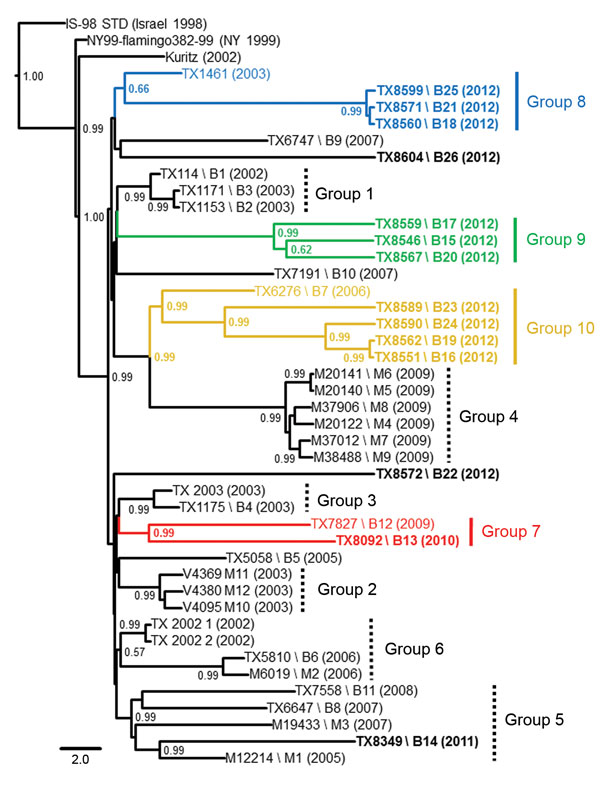Volume 19, Number 9—September 2013
Research
Continued Evolution of West Nile Virus, Houston, Texas, USA, 2002–2012
Figure 1

Figure 1. . Bayesian-inferred, 50% majority-rule, coalescent phylogenetic tree of published, full-length West Nile virus isolates, Harris County, Texas, USA, 2002–2012. Novel 2010–2012 Harris County isolates cluster into 4 distinct monophyletic groups designated group 7 (red), group 8 (blue), group 9 (green), and group 10 (yellow). Strain names link geographic map code (e.g., B1, B2, M1, M2) with year of collection annotated in parentheses. Isolates sequenced in this study are indicated in boldface. Posterior probabilities ≥0.90 are indicated along branches to provide statistical support for inferred topologies. Scale bar indicates divergence time in years.
1These authors contributed equally to this article.
Page created: August 20, 2013
Page updated: August 20, 2013
Page reviewed: August 20, 2013
The conclusions, findings, and opinions expressed by authors contributing to this journal do not necessarily reflect the official position of the U.S. Department of Health and Human Services, the Public Health Service, the Centers for Disease Control and Prevention, or the authors' affiliated institutions. Use of trade names is for identification only and does not imply endorsement by any of the groups named above.